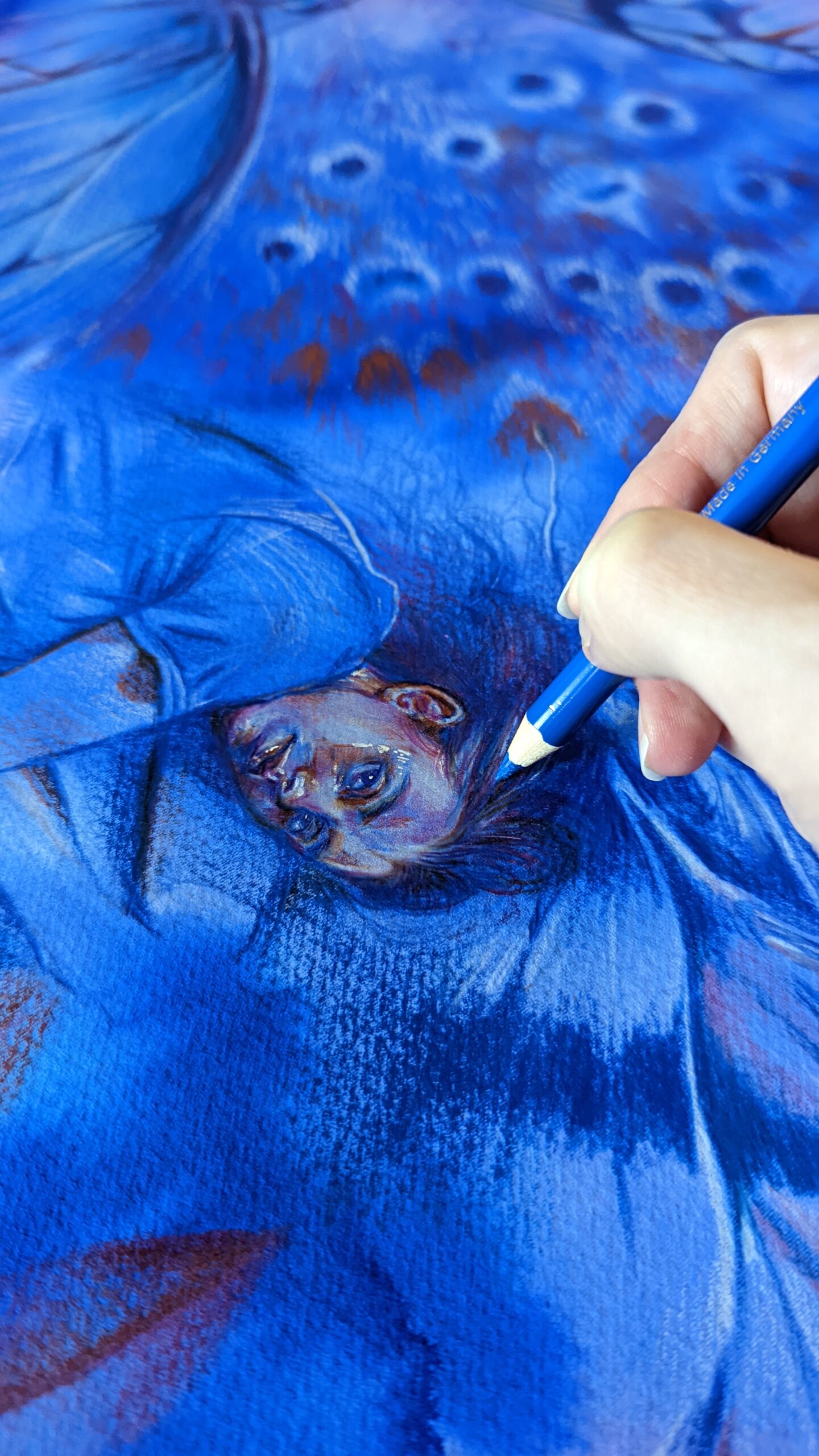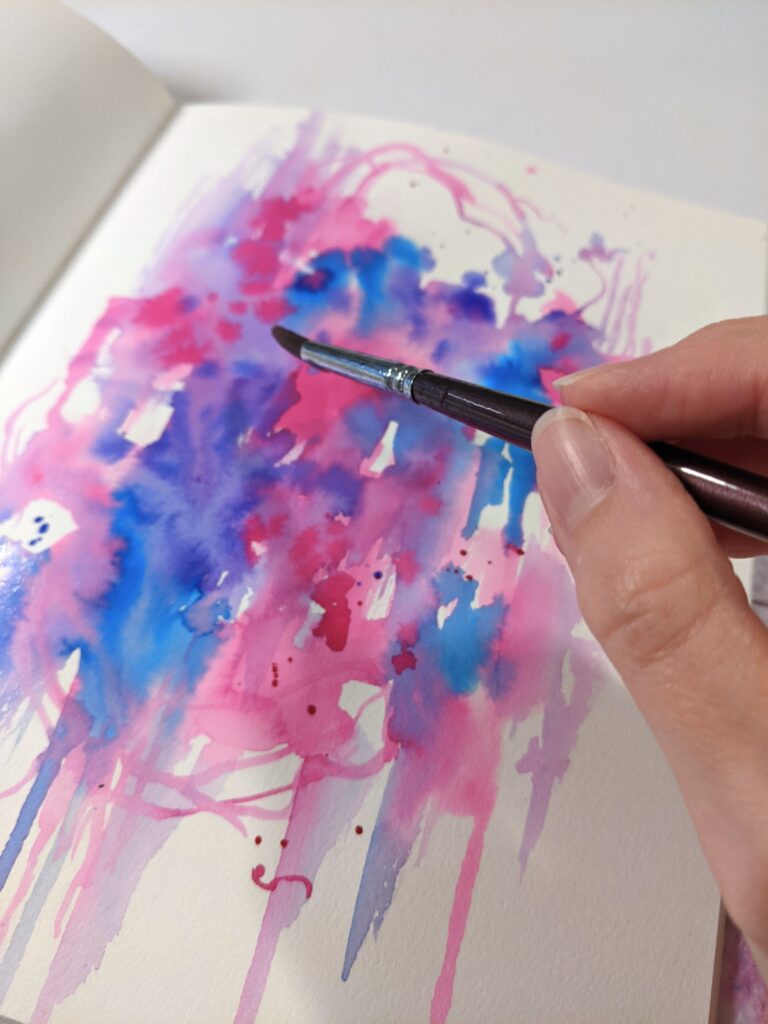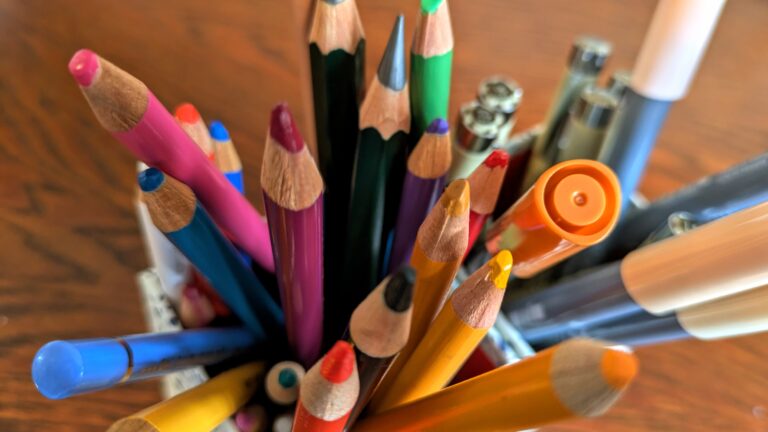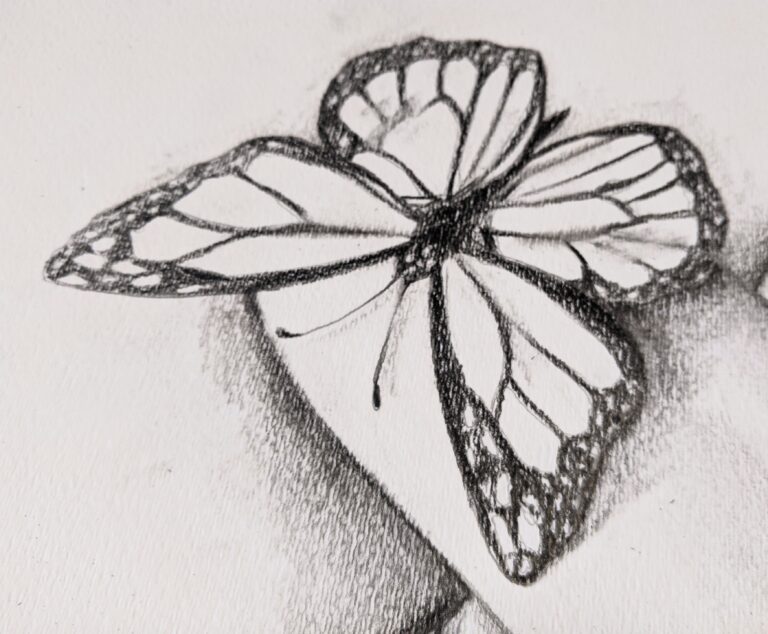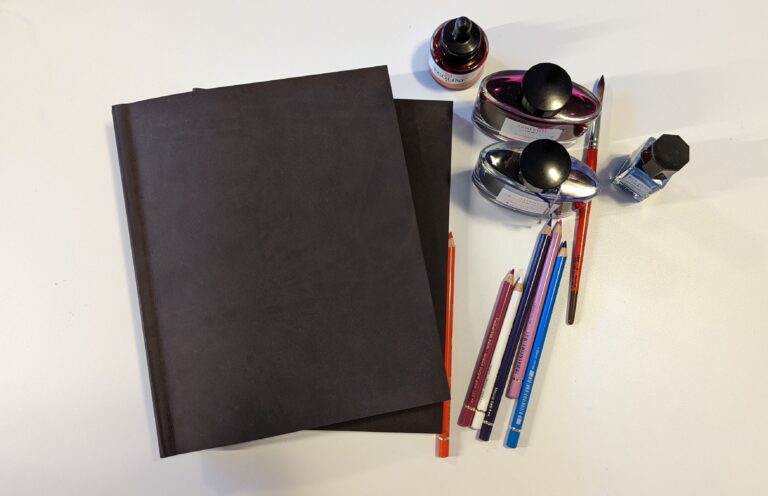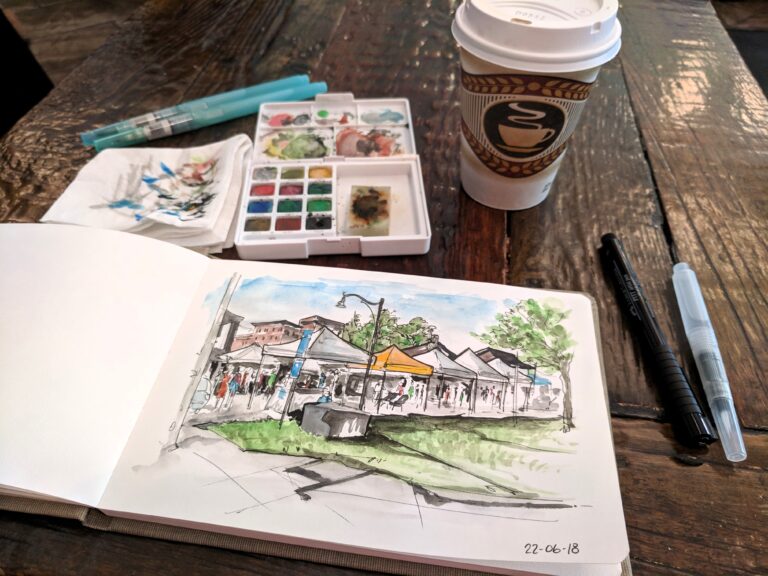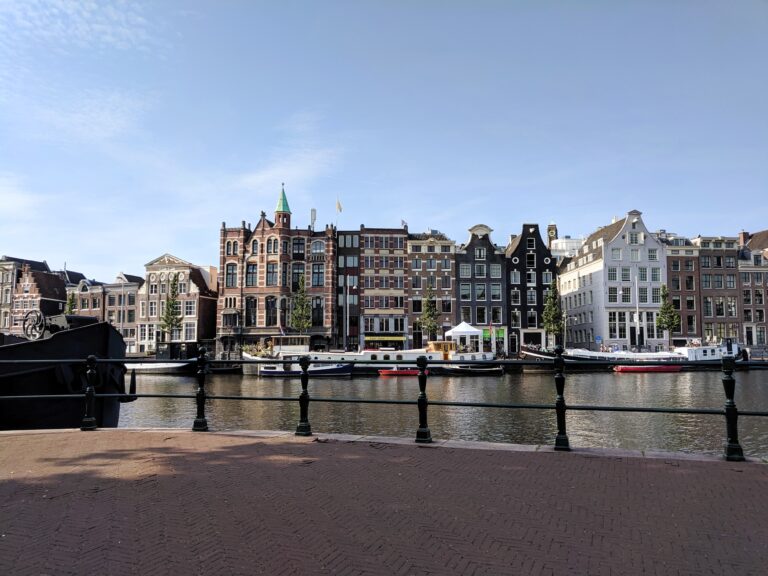I wish I could’ve had a mentor early on. I remember having many questions about finding an art style, my medium’s best practices, creative process, goals, etc.
If you’re starting your artistic journey and feeling a little overwhelmed, I’d like to share ten important lessons and art advice I wish someone could have shared with me as a beginner.
Here are the biggest lessons I learned as an artist so far:
1) Be authentically you.
The beauty of art is sharing your unique viewpoint with the world. Don’t let anyone or any algorithm tell you what you should be making.
Finding your identity as an artist won’t be an easy task. You might need to try different mediums and explore various subjects to find the one that speaks to you.
“Authenticity is a collection of choices that we have to make every day. It’s about the choice to show up and be real. The choice to be honest.”
Brené Brown, The Gifts of Imperfection
So be brave and make the art that YOU want to make, no matter what anyone else thinks.
2) Social Media shouldn’t dictate what you create.
A few years ago, I would regularly post my art on social media. I’d get little to no engagement and I took that as a sign that maybe my art just wasn’t that “good”.
I often felt discouraged, especially when comparing my work to other artists.
So the lesson here is that the number of likes and engagement on social media really doesn’t matter. The concept of good versus bad art is highly subjective anyway.
Instead, post artwork you’re proud of or scroll the platform for inspiration. You can also show some of your “work in progress” and ask people for feedback.
And if social media doesn’t bring you joy, then you can disregard it completely.
3) Art school isn’t for everyone.
In 2017, I graduated with a Bachelor of Fine Arts in Painting and Drawing. Since then, I’ve had time to reflect on my time in art school.
If you’re considering applying for an arts program, here is my list of pros and cons:
Pros: based on my experience.
- Creative environment and workspace.
- Taking art classes from beginner to advanced (sculpture, drawing, painting, art history, finance, etc.).
- Frequent critiques (feedback) of your work with teachers and classmates.
- Opportunities to take courses abroad like a month-long advanced drawing course in Italy.
- Meeting other artists and making friends.
Cons: based on my experience.
- Not all teachers are great at providing constructive criticism and some have narrow views about Art.
- Overwhelming schedule that requires a lot of note-taking and extensive homework.
- It won’t necessarily prepare you for a career as a full-time artist. I found it lacking in that aspect. (From a BFA point of view)
- Expensive as in tens of thousands of dollars, but this number will differ depending on your area.
With that in mind, would I recommend going to art school?
Yes, definitely. If you truly love making art and can afford it, art school is worth it. It’s also where I met my best friend!
Depending on your major, you start by learning art fundamentals and gradually move up to more advanced topics and techniques. You even have access to large shared studios where you can store your artwork.
4) Your “art style” will change over time.
Your art style is what makes you recognizable as an artist; things like your process, repetitive visual elements or subject matter and overall aesthetic.
As a beginner, I encourage you to try different styles and mediums.
Focus your efforts on learning art fundamentals and gaining confidence. Don’t limit yourself to one medium simply because it’s part of your comfort zone.
For example, when I was a teenager, I drew anime which evolved into drawing characters. In the beginning, I was only interested in drawing but later grew fond of mixing both painting and drawing.
Now I’m a mixed media artist who mainly paints portraits. I’ve tried everything from animation, graphic design, urban sketching, abstract painting and more.
For years, I tried to “find” my art style only to realize that you don’t actually find your art style, it sort of finds you. It sounds cheesy, but it’s true!
5) Talent doesn’t automatically equal success.
Maybe it’s a misconception amongst new artists, but talent or skill doesn’t always equal success.
I define success as the opportunity to showcase your work (exhibitions) or have a steady income from your art.
You could be the best hyper-realistic painter, but that doesn’t matter if no one sees your work. Social media is one way to get your work out there however, that largely depends on the algorithm.
Look not for one, but many ways to showcase your work. Have a website with your portfolio, participate in an art contest (or craft show) and collaborate with other artists.
In the future, if you become a full-time artist, you’ll have to shift to a business mindset.
6) Listen to constructive criticism and ignore negative comments.
In the art world, everyone tends to be very opinionated about their likes or dislikes. Unfortunately, some people think it’s ok to say or write disrespectful comments about your work.
Disregard these negative comments entirely and learn to build a tolerance towards them.
In contrast, people who write constructive criticism will generally offer you an explanation as to how you might improve your work.
A few examples of constructive criticism:
- I like the eyes in your portrait, but I think you could improve the way you draw hair. Try to add more details and highlights.
- Your winter scene is beautiful! But I noticed that the perspective on the small cottage you painted is wrong. Take a look at your reference image.
- Your colours are looking a little dull – make sure you’re not mixing them with black to create your shadows. Instead, you might want to mix darker complementary hues (colours).
7) Don’t rush the process; take your time and learn from your mistakes.
Your artistic process is more important than the final result. If you’re unsure what this so-called “process” is, it represents all the steps you take to create artwork.
What materials do you use? In what order? Do you make thumbnail sketches before committing to a composition? Do you use a specific colour palette? And so on.
Granted, a finished piece is a great achievement and you should always be proud of your work. Still, growth as an artist comes from problem-solving issues during those early stages.
When your artwork isn’t going according to plan, try to take a step back and look at the big picture. Working around these issues and finding creative solutions will make you a better artist in the long run.
And if you try something that ruins your artwork, don’t dwell on it. Apply this newfound knowledge to your next piece.
8) Set realistic art goals to stay motivated.
Art goals can provide enough motivation to maintain a healthy creative habit. I put together a simple step-by-step guide to help you write and keep track of your goals.
For beginner artists, these goals should be easily achievable within a specified time frame. If yearly goals are too far out, you could focus on monthly goals instead.
Examples of art goals I recommend for beginner artists:
- I will participate in the Inktober event, drawing one prompt daily in October.
- I will take one free online course every month of the year to learn about art fundamentals.
- I will focus on a weakness (like portraits) and dedicate one page in my sketchbook every week from June to September to improving.
9) Learn from Master Studies.
I’m not referring to a graduate degree… In art terms, a Master Study is when you try to replicate artwork for educational purposes.
This eliminates some of the stress you might feel regarding the kind of painting or drawing exercise you should do as a beginner.
Pick a specific part of the artwork that you’re drawn to. Start with one art principle or technique and eventually, you can copy as much or as little as you want from the original artwork.
Some examples of what you might want to study:
- Brushwork/lines
- Colour palette
- Composition
- Perspective
- Values
- Art movement
If available, look up information regarding the artists’ technique or process.
In recent years, you can go on platforms like YouTube and look at their artistic process from start to finish. I highly recommend watching these videos instead of beginner tutorials.
In case this isn’t obvious, Master Studies aren’t meant to be shared online for copyright reasons. The only way to do so ethically is to look at public-domain images.
A great resource is the National Gallery of Art‘s open-access image database.
10) Take a break once in a while.
If you’ve ever been told that daily practice is essential to stay relevant, well I say otherwise. To avoid creative burnout, it’s important to take breaks.
Pause briefly while you’re working on a larger time-consuming piece; take a step back and go on a coffee or lunch break. Your artwork will surely benefit from a fresh perspective.
You should also take longer breaks if you’re tired. Sometimes after a long day, I just don’t have the energy to dedicate to my art. Instead, I listen to my body and get some well-deserved sleep.
As long as you have a consistent weekly practice, you will see improvement over time.
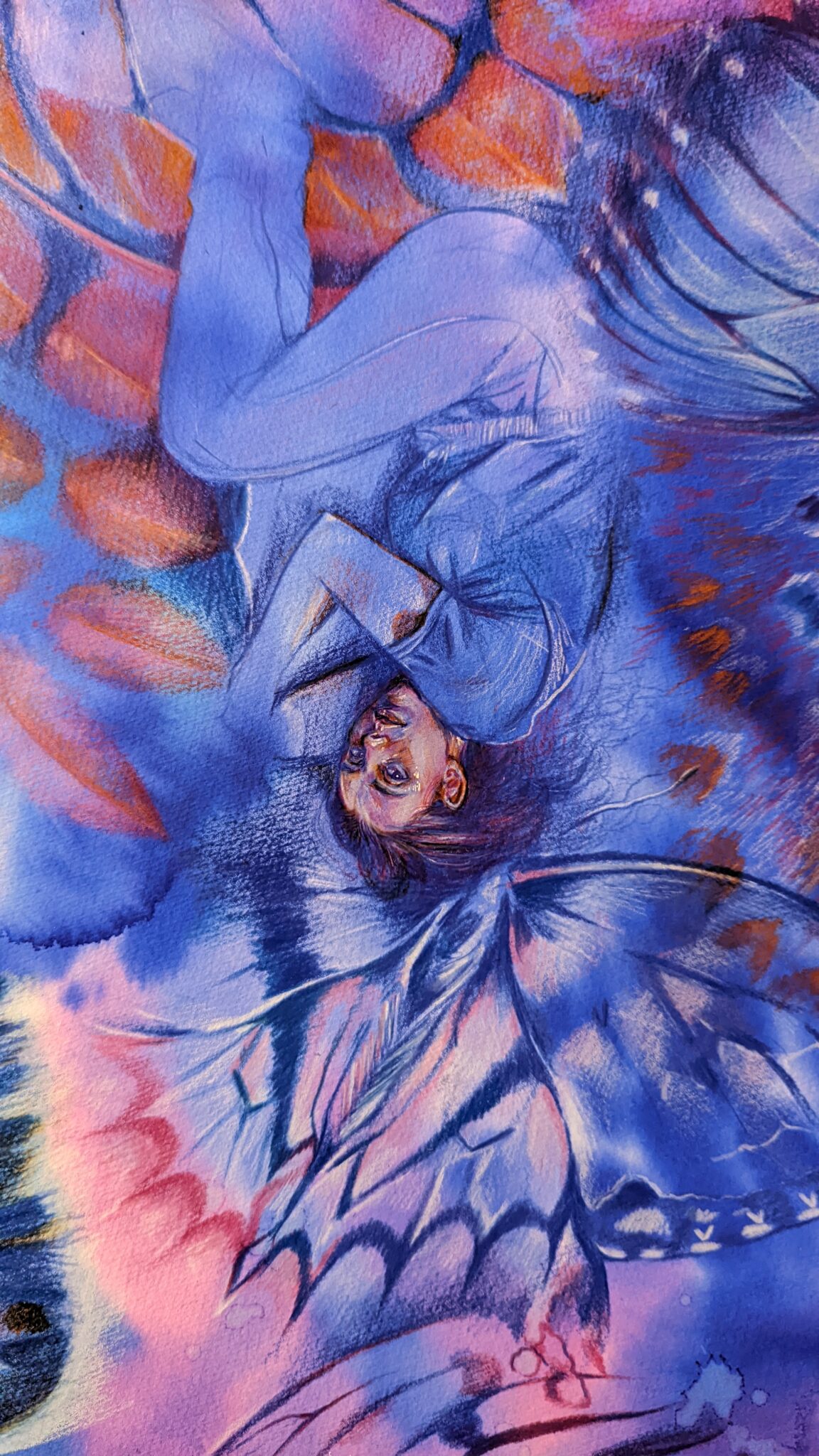
Key Takeaways
These are the 10 most important lessons I learned as an artist so far:
Lesson 1: Be authentically you. Why? Because the beauty of art is sharing your unique viewpoint with the world.
Lesson 2: Social Media shouldn’t dictate what you create. Why? Because the number of likes and engagement on social media doesn’t matter.
Lesson 3: Art school isn’t for everyone. Why? Because it won’t necessarily prepare you for a career as a full-time artist. Go to art school to make new art friends, learn fundamentals, gain access to large studios and get great feedback on your work.
Lesson 4: Your “art style” will change over time. Why? Because you don’t actually find your art style, it will develop naturally over time.
Lesson 5: Talent doesn’t automatically equal success. Why? Because you have to learn how to market yourself and think of your art as a business.
Lesson 6: Listen to constructive criticism and ignore negative comments. Why? Because you should learn to decipher between those who want to help you improve and the comments that offer no value.
Lesson 7: Don’t rush the process; take your time and learn from your mistakes. Why? Because your artistic process is more important than the finished product.
Lesson 8: Set realistic goals to stay motivated. Why? Because setting art goals can help you maintain a healthy creative habit.
Lesson 9: Learn from Master Studies. Why? Because it’s a wonderful way to learn from the artists you admire.
Lesson 10: Take a break once in a while. Why? Because to avoid creative burnout, it’s important to take breaks.

